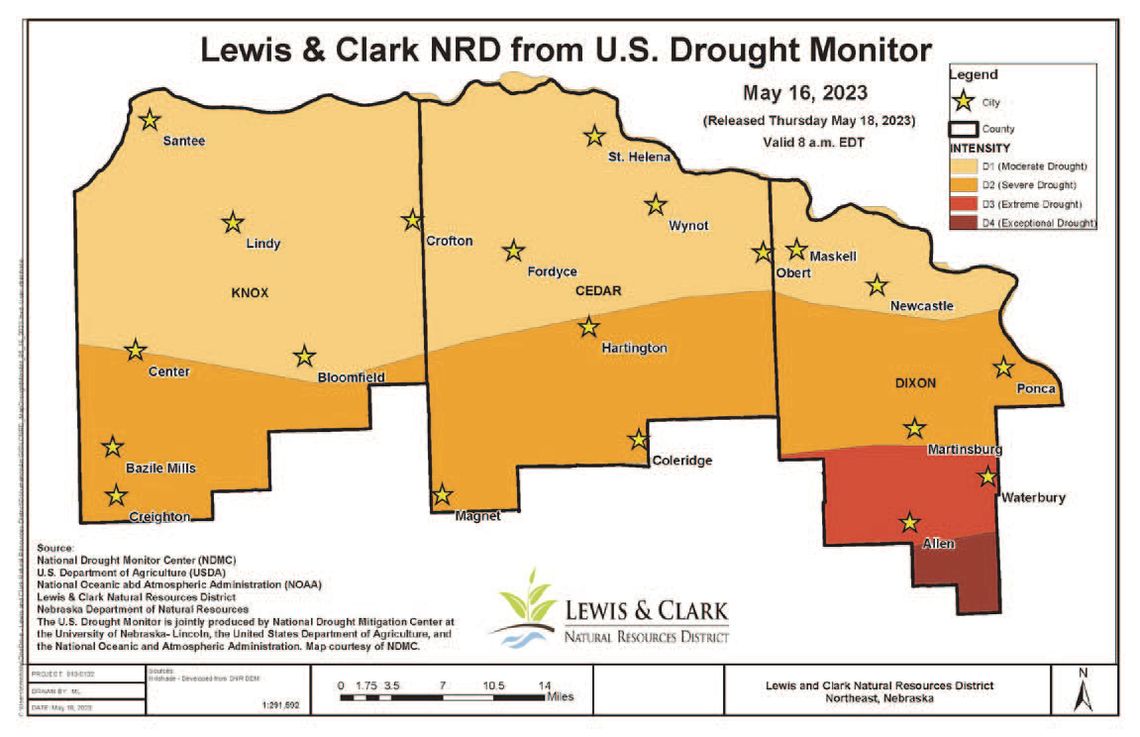LINCOLN - With the cold conditions finally subsiding, farmers have been preparing fields and planting crops for another grow - ing season. Even though there was more precipita - tion over the win - ter than in past years, and there have been spring rains, much of the district and state continue to ex - perience drought conditions.
The U.S. Drought Monitor provides a region - al breakdown and a written sum - mary of the changes in the drought depiction each week. The summary utilizes a scale that represents the severity of the drought, Abnormally Dry (D0), Moderate Drought (D1), Severe Drought (D2), Extreme Drought (D3), and Excep - tional Drought (D4). The U.S. Drought Monitor provides a consistent big picture of the conditions in the United States. However, it is not a reliable tool for determining drought conditions on a local scale.
The summary is prepared by the National Drought Mitigation Center at the University of Nebraska-Lincoln (NDMC), the United States Department of Agriculture, and the National Oceanic and Atmospheric Administra - tion. Authors from these departments collect and publish the data each week. To keep an eye on drought conditions or learn about the U.S. Drought Monitor, visit https://droughtmon - itor.unl.edu/CurrentMap. aspx. A primary goal of Lewis & Clark Natural Resourc - es District is to monitor and manage groundwa - ter resources. Persistent drought conditions can have negative impacts on surface and groundwater resources. Water levels are mea - sured annually across the district, and rules and regulations are in place to help manage groundwater water resources. Requirements could be enacted if management trigger lev - els are met. Conservation is key to mitigating impacts to wa - ter and soil resources.
A weekly Drought Monitor snapshot of the district, comparing the current week to the prior week, is available on Facebook and on the LCNRD website. If you have any
.jpg)











